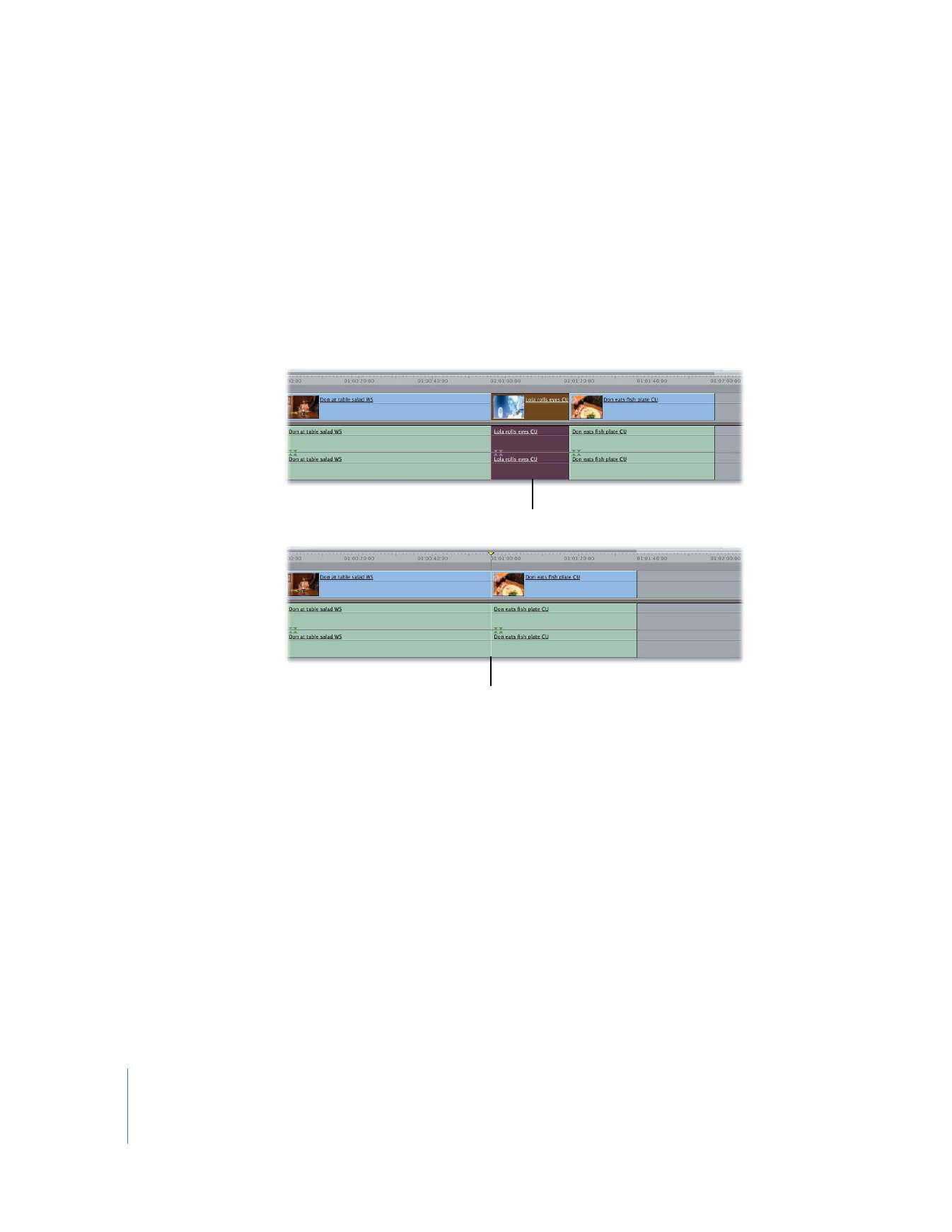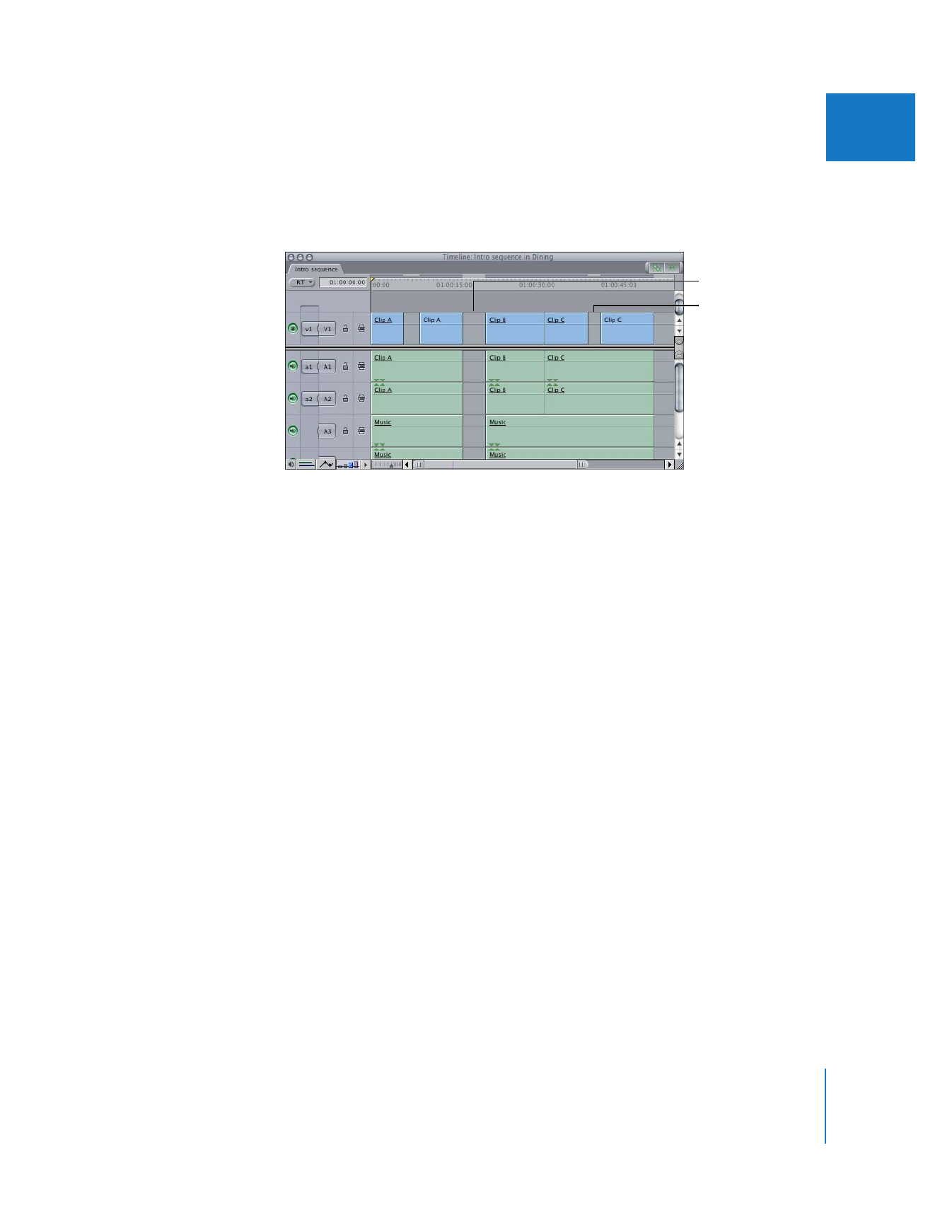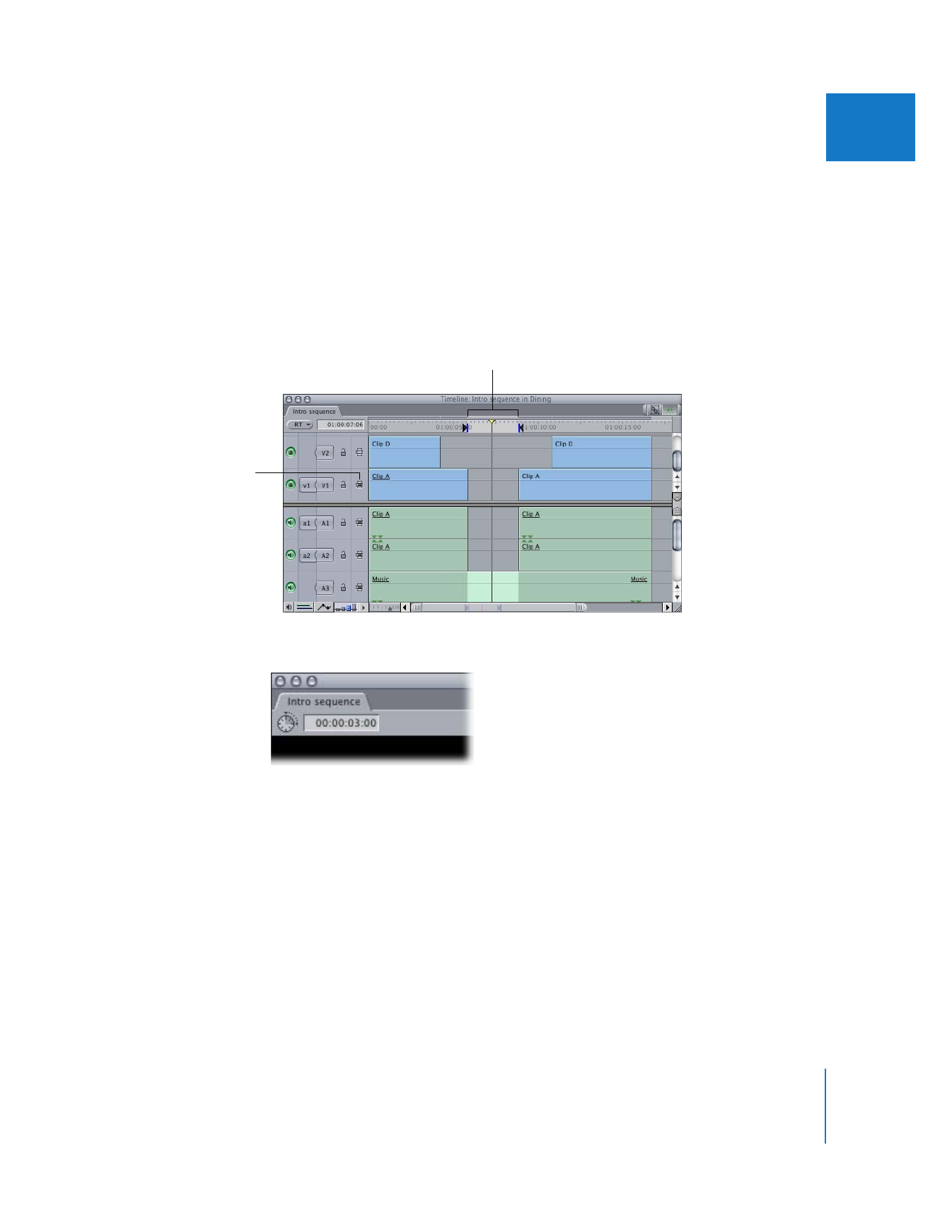
Finding and Closing Gaps
As you edit, cut, paste, and move items around in Final Cut Pro, empty spaces (called
gaps) may be left between clips in your sequence. Sometimes they are extremely small
(one or two frames), which makes them difficult to see in the Timeline. When a
sequence with gaps plays back in the Canvas, however, even tiny gaps are apparent as
flashes of black, so you don’t want to unintentionally leave them in the sequence.
Selected clip items
After the ripple delete, the
clip items are removed, with
no gap remaining.

Chapter 12
Arranging Clips in the Timeline
203
II
There are two types of gaps:
 Track gaps: These are empty spaces between two clips in the same track.
 Gaps: These are track gaps that occur in every single track of your sequence.
To find gaps in a sequence:
1
Move the playhead to the beginning of the sequence to start looking from the
beginning. Otherwise, you can look for gaps to the right or left of the playhead’s
current position.
2
Do one of the following:
 Choose Mark > Next, then choose Gap from the submenu (or press Shift-G).
 Choose Mark > Previous, then choose Gap from the submenu (or press Option-G).
The playhead moves to the beginning of the first gap found to the right or left of
the playhead.
To find track gaps in a sequence:
1
Decide which track to search and make it the destination track.
2
Do one of the following:
 Choose Mark > Next, then choose Track Gap from the submenu.
 Choose Mark > Previous, then choose Track Gap from the submenu.
The playhead moves to the beginning of the first track gap found.
To close a gap, do one of the following:
m
Position the playhead anywhere within the gap, then choose Sequence > Close Gap (or
press Control-G).
m
Control-click anywhere within a gap, then choose Close Gap from the shortcut menu.
m
Select the gap by clicking it, then press Delete.
All clips to the right of the gap move left to close the gap.
Track gap
Gap

204
Part II
Rough Editing
Because this command shifts all clips to the right of the gap to the left, the command is
not available if a clip on another track overlaps this gap. (This would change the
relationship of the overlapping clip to the rest of your sequence, or change the
audio-video sync if it’s an audio clip underneath a video clip.)
If you don’t care about the sync relationship between the rest of your sequence and
the overlapping clip, you can lock tracks containing overlapping clips and then use any
of the above commands to close the track gap.
To close a track gap without affecting any other tracks in the sequence:
1
Click the Lock Track control of any tracks with clips that overlap the gap you’re trying
to close.
2
Close the gap by doing one of the following:
 Position the playhead anywhere within the gap, then choose Sequence > Close Gap
(or press Control-G).
 Control-click anywhere within the gap, then choose Close Gap from the
shortcut menu.
 Select the gap by clicking it, then press Delete.
To close a track gap using the Select Track Forward tool:
1
Make sure snapping is turned on.
For more information, see “
Snapping to Points in the Timeline
” on page 189.
2
Select the Select Track Forward tool in the Tool palette.
3
Click the first clip to the right of the track gap.
All clips to the right are selected.
4
Drag the selected clips to the left until they close the gap and snap into place beside
the earlier clip.

Chapter 12
Arranging Clips in the Timeline
205
II
To determine the duration of a track gap in the Timeline:
1
Option-click the Auto Select control for the track with the gap.
2
Position the playhead in the gap.
3
Do one of the following:
 Choose Mark > Mark Clip.
 Click the Mark Clip button in the Canvas.
 Press X.
The track gap’s duration appears in the Timecode Duration field in the Canvas.
In and Out points set
based on track gap on V1.
Auto Select control
enabled

206
Part II
Rough Editing